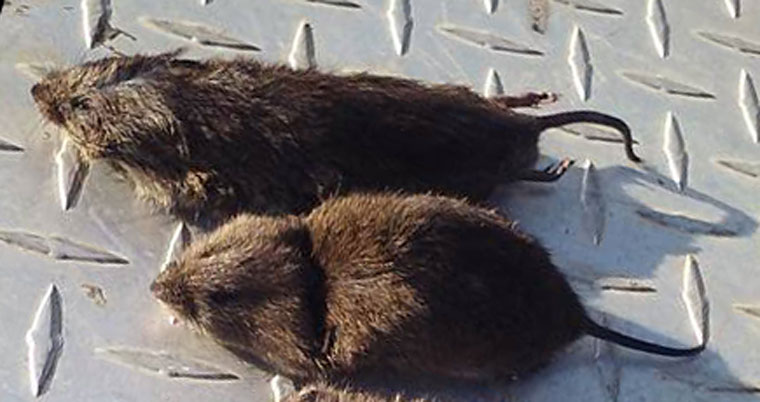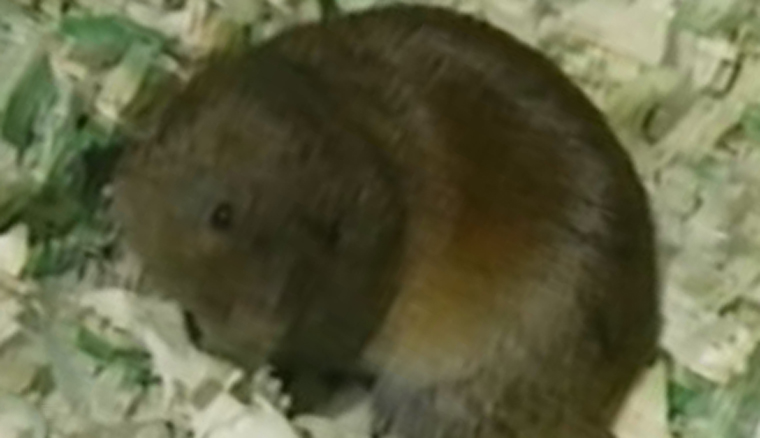-
info@aaanimalcontrol.com
Call us for help in your town
Humane Wildlife Education
Tips on keeping voles away
Need wildlife removal in your hometown? We service over 500 USA locations! Click here to hire us in your town and check prices - updated for year 2020.
A lot of you may read the title of this article and ask yourself what the heck is a vole? That's a really interesting question, because there is no doubt that a good portion of this country has no idea what this little rodent even is.

A vole is a small rodent -like creature, that is related directly to the mouse, yet has a little shorter body that is much stock ear, has a furry tail to it, smaller sized ears then you would find on a mouse, and different shapes in its teeth, especially in the molars. Amazingly, even though you rarely hear about these creatures, there are actually 150 different species of voles. This tells you that they are a pretty substantial creature out there that you just don't hear a lot about.
The primary reason that you probably don't hear about this animal is because of how similar it looks to the mouse. The likelihood is that the vast majority of people would confuse these two animals, and so they may think they have a mouse when they actually have a vole.
Regardless of which one of these creatures you have, you likely don't want voles around your house for the same reason that you wouldn't want my mice there. They pose a similar health risk to you and your family that mice do, plus you have the issue of the destruction they can cause in the waste that they leave behind. These are plenty enough reasons to try to take the kind of steps to keep these rodents away. The question is how do you keep away voles?
Because of the similarity between these rodents and mice, this is a good place to begin. What is meant here is that the same measures that you would take to keep mice away is what you should use to keep away voles.
Where to begin is by ensuring that you remove away any potential sources of food that a vole could get into. You should ensure that you clean your counters thoroughly each day, sweep and mop the floor, stick all food items in a container that you conceal, and pick up your dog or cat dish each night so that these little rodents do not have a source of food. The best thing you can do to keep them away is to give them no reason to come around. These steps will help you to do that.
You also want to make sure that you have done all that you can to keep these animals from being able to gain access into your home. This means that you need to check to ensure that there are no holes, cracks, or loose boards that allow the animal to be able to get into your home. Check around the foundation and in any areas where there can be a potential location for the vole to get into your home. If you block these things and don't allow it access, you can help to keep it away.
How to Keep Away Voles
Need wildlife removal in your hometown? We service over 500 USA locations! Click here to hire us in your town and check prices - updated for year 2020.Voles, although similar to moles in more ways than just name, are actually related to the rodent family -- mice and rats -- which I'm sure makes you think a little differently about them. Although they can vary greatly in size, most species sit comfortably between the three to five inches in length bracket, and, although small, can do quite a bit damage to your back garden in just one night.

These creatures are believed to be nocturnal, but they can actually be active during the day and night. They can live both above and below the ground, dependent on the species you're looking at. Pine voles are usually the ones that live beneath the ground, with meadow voles living on top of the soil instead. Both of them are well known for those annoying tunnels and burrows that appear in the law, however, and that's mostly for safety, as well as the vast array of bugs that are available down there. They eat plenty of plant material too, including tubers, roots and grasses, and that's alongside other goodies, such as smaller mice.
Signs of Vole Activity
There are plenty of signs you'll notice when voles have moved into your garden, and one of the biggest giveaways is often two-inch wide runways streaming across it. You will also notice holes around the bottom of trees, and this is often where the vole burrows lie.
Many homeowners get vole holes and mole hills confused, but voles are generally rider than their mole cousins. There is usually not much in the way of soil around the openings of vole holes, whereas there is with moles.
How to Keep Away Voles
We'll start with the ways to keep away voles that probably won't have the best results. Poison is NEVER a good idea. We don't even recommend poison for rats and mice. It doesn't work, it's certainly not as fast or effective as the packaging would lead you to believe, and you will need to run around your property looking for dead rodents to clean up. If they're in your house, they're likely to be hidden somewhere extremely difficult for you to get to.
If you have a specific patch you'd like to protect, such as a garden area, you can use wire mesh as protection. You will need to make sure that the wire mesh protections a good few inches above the ground — around five or six — and also around 30 inches below the ground too. The aim of the game is to protect the garden bed (or wherever you want to protect) with a barrier underground and above the ground. They can't easily clamber over it. They can't chew or dig through it underground. Although time-consuming, labor-extensive, and somewhat less aesthetically pleasing than other methods, it's one you'll want to make sure you do correctly the first time. If you're not sure what to do or how to do it, we highly recommend that you call in the experts. If the barriers are not installed correctly, the voles will still continue to make a mess of your garden. All that work you put in installing the barriers will have been for nothing, and all that money too, and you'll still need to repair the damage caused by ongoing vole invasions.
Pointless.
If voles seem to be attacking certain trees on your property, you can also use wire meshing to protect the trunks. You simply wrap the wire mesh around the tree, giving it a protective layer or skirt, making sure it sits quite high — around 15 to 20 inches.
Another way that you can use that wire mesh is by creating a miniature cage for your bulbs to sit in when you plant them. Rather than just placing the bulbs in the ground and hoping for the best, you build a small wire cage around it, put the bulb in it, and then place it in the ground. The wire cage makes it very difficult for the vole (as well as other wild animals) to get to it and eat it, giving the bulb a much higher chance of surviving.
Grub removal is another tactic you could look at to keep away voles. When there is nothing there for the animal to eat, it will often move on to find somewhere better, rich in food sources. There are various products you can buy to kill the insects and grubs that live in your garden and lawn, and when you kill these, you're making your property look less attractive to your rogue invaders. We never recommend using any toxic chemicals to solve the problem, but there are more eco-friendly items on the market these days. Look for something that doesn't contain too many chemicals. You don't want to kill a whole bunch of other animals just to get to that one vole, do you? (That's also another reason why poisoning the creatures is a bad idea, just so you know.)
Of course, going back to basics will certainly help, and by that we mean cleaning up your garden. If there is nothing around for these animals to find shelter and safety in, they won't have a reason to come back. If you clean up and make sure that your garden is essentially food free, you're taking away the things that attract the animals there in the first place. All these creatures are looking for is some food, some fresh water, and a safe place to bed down for the night, or to raise their young.
For more information, you may want to click on one of these guides that I wrote:
How To Guide: Who should I hire? - What questions to ask, to look for, who NOT to hire.
How To Guide: do it yourself! - Advice on saving money by doing wildlife removal yourself.
Guide: How much does wildlife removal cost? - Analysis of wildlife control prices.
Animals in the attic - read about the common species.
Noises in the attic - how to identify critters by their sounds.


















